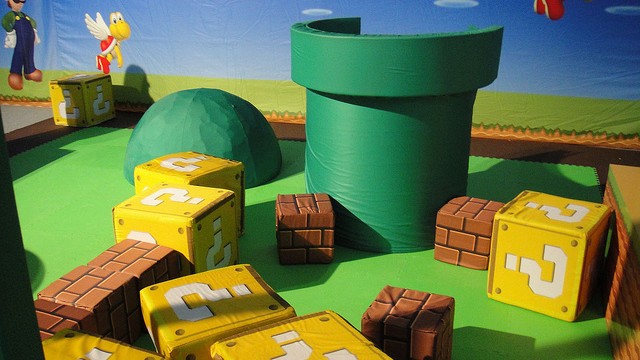The recent APA (American Psychological Association) article entitled, “The Benefits of Playing Video Games” by authors Isabela Granic, Adam Lobel, and Rutger C. M. E. Engels surveyed the landscape of video games. They identified four types of positive impact that video games have on the kids who play them: cognitive, motivational, emotional, and social.
Gameplay has cognitive benefit because games have been shown to improve attention, focus, and reaction time. Games have motivational benefit because they encourage an incremental, rather than an entity theory of intelligence. Games have emotional benefit because they induce positive mood states; in addition, there is speculative evidence that games may help kids develop adaptive emotion regulation. Games have social benefit because gamers are able to translate the prosocial skills that they learn from co-playing or multiplayer gameplay to “peer and family relations outside the gaming environment.”
Thinking about cognitive, motivational, emotional, and social skills reminds us that educators are not just responsible for the transmission of content and facts. Of course, this is one of the reasons that there is so much controversy over testing. Standardized tests measure only quantifiable outcomes. Educators, however, are also responsible for the non-quantifiable well-being of our students. Some of these skills are taken into account in some schools when folks talk about “character education.” But mostly, there is little curricular systematization in these areas. Still, teachers are accountable for conflict resolution and other interpersonal skills. Video games can help.
A survey done in Ireland, Online Gaming and Youth Cultural Perceptions by Killian Forde and Catherine Kenny, suggests that kids who play multi-player games online are more likely to have a positive attitude toward people from another country: 62 percent of online gamers hold a favorable view of people from different cultures compared to 50 percent of non-gamers. Unlike school, where the diversity of the institution is rarely reflected by individuals’ peer groups, interactive online gaming correlates with a more diverse group of friends. Might the same principle be applied to the classroom? Could multi-player learning games help eliminate bullying and build camaraderie among classmates?

Studies like these are generally held at face value, but critics of games are quick to point out that the violent ones are morally reprehensible. Though I’m not a fan of violent video games, studies have shown that there are even positive benefits from playing these types of games. One study, published in Nature, showed that playing fast-paced “action based” video games improves “attentional processing” and also “induces long-lasting improvements in contrast sensitivity, a basic visual function that commonly deteriorates with age.” Of course, the violent narrative content is not likely responsible for these benefits. It seems more likely that it has something to do with the fast pace which demands quick reflexes.
The most convincing neurological research shows that video games contribute to neural plasticity because games provide “a multitude of complex motor and cognitive demands.” In this study, players played platformers such as Super Mario Brothers for at least 30 minutes a day for 2 months. They showed "significant gray matter (GM) increase in right hippocampal formation (HC), right dorsolateral prefrontal cortex (DLPFC) and bilateral cerebellum.” These are the areas of the brain “crucial for spatial navigation, strategic planning, working memory and motor performance.”
DIFFERENT GAMES FOR DIFFERENT GOALS
But it's a little disingenuous to say that games are “good for kids.” Games are not like vegetables. Don’t imagine them as if they were packed with vitamins and nutrients that help kids grow into healthy adults. Like all forms of media, it depends on the particular games and how they are used.
“One can no more say what the effects of video games are, than one can say what the effects of food are. There are millions of individual games, hundreds of distinct genres and sub-genres, and they can be played on computers, consoles, hand-held devices and cell phones. Simply put, if one wants to know what the effects of video games are, the devil is in the details.” Say Daphne Bavelier & C. Shawn Green, in Nature Reviews Neuroscience.
The details include, among other things, the narrative content: the story of the game. Games with very similar mechanics could have drastically different stories. For example, replace PacMan and the Space-Ghosts with Theseus and the Minotaur and it is a very different game. I can imagine a game called Steve the Fracker that might look very similar to Minecraft, but the implications are altogether different. Understanding how shifting the narrative can change the game gives developers a clue about how they might build learning games and also helps teachers imagine how they might use existing commercial games to reinforce learning outcomes.
Imagine if we could build learning games that provided the same kinds of complex motor and cognitive demands as fast paced action games while featuring narrative content that was curricularly relevant. Games all feature stories laid atop interactive mechanics. One approach to learning games might be to build narratives that reinforce educational content while employing the same familiar game mechanics. Teachers could also have students imagine how existing commercial game narratives might be retold to be relevant to class content.
The studies summarized here identify some of the ways that games, considered in a general way, can have positive impact on the people that play them. To get the most out of games, however, the facilitation and mentoring that adults can provide children is absolutely essential. Teachers should design curriculum that not only uses game-based instruction, but also makes kids aware of the way games are designed. Parents should play games with their kids at home.


